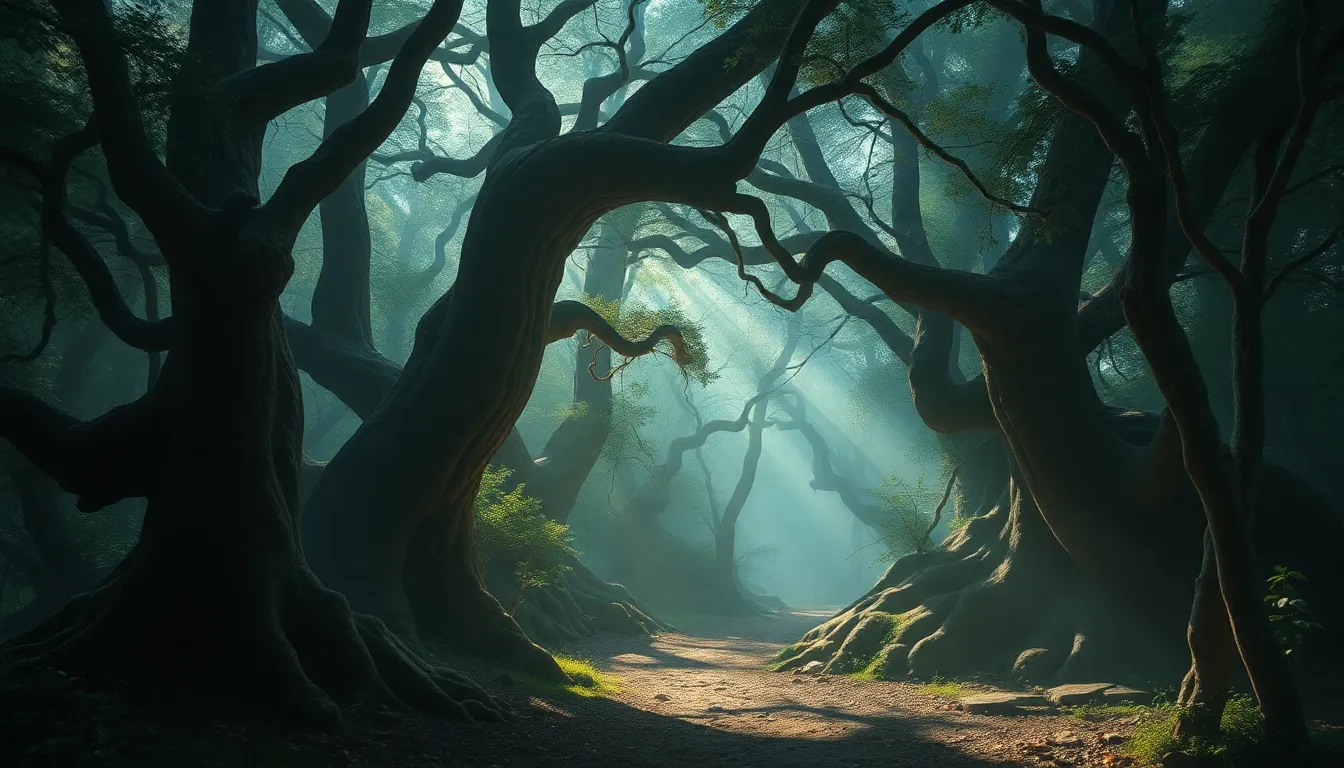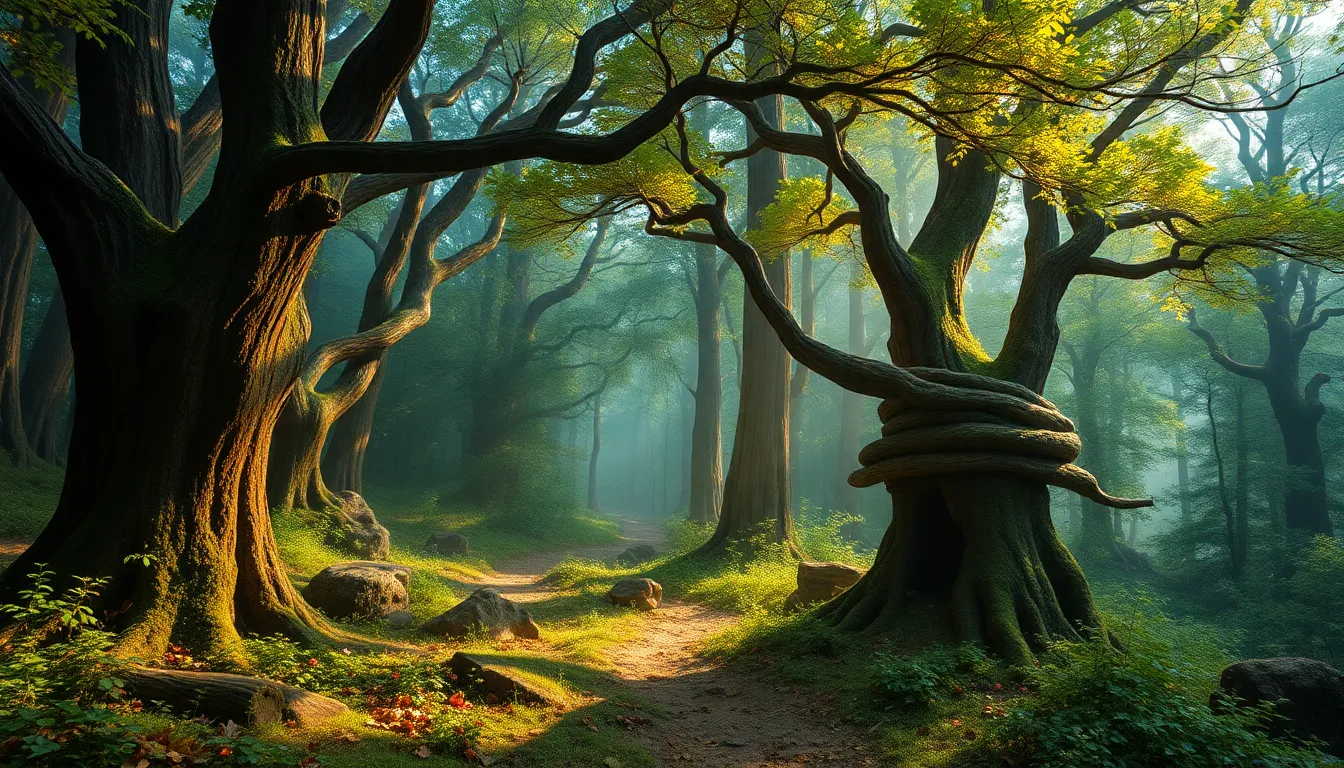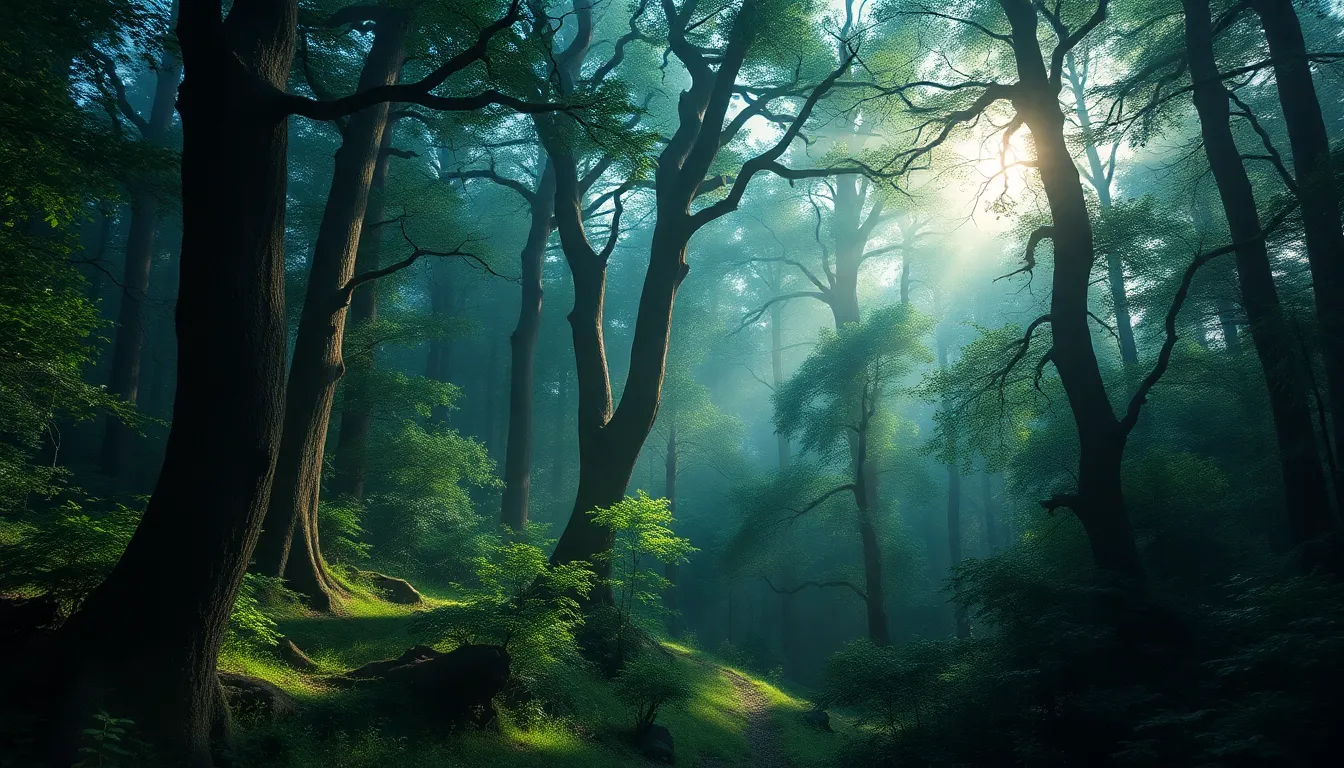Exploring the Depths of Enchanted Forest Myths
1. Introduction to Enchanted Forests
Enchanted forests are mystical and magical spaces often depicted in folklore and mythology. These forests are characterized by their otherworldly beauty, filled with extraordinary flora and fauna, and often imbued with a sense of mystery and wonder. They are places where the boundaries between reality and fantasy blur, making them central to many cultural narratives.
The significance of enchanted forests in folklore is profound. They often serve as settings for adventures, trials, and transformations, embodying the unknown and the supernatural. In many tales, entering an enchanted forest signifies a journey into the depths of the self, where one may encounter both danger and enlightenment.
2. Historical Roots of Enchanted Forest Myths
The connection between ancient civilizations and forests is deeply rooted in human history. Many early societies revered forests as sacred spaces, believing them to be the abodes of gods, spirits, and ancestors. These beliefs laid the foundation for the myths that would evolve over centuries.
As cultures developed, so did their stories surrounding forests. For instance, the myths of the Greeks featured sacred groves dedicated to deities like Artemis and Dionysus, while Norse mythology highlighted Yggdrasil, the World Tree, connecting the heavens, earth, and underworld. Each culture’s interpretation of forests reflects their values, fears, and aspirations.
3. Common Themes in Enchanted Forest Myths
Enchanted forest myths often explore recurring motifs that resonate across cultures. Some common themes include:
- Transformation: Many stories involve characters undergoing significant changes, symbolizing personal growth or the passage from innocence to experience.
- Guardianship: Forests are frequently associated with protectors, be they mythical creatures or wise old beings, who uphold the balance of nature.
- The role of nature: Nature often reflects human emotions and serves as a catalyst for personal revelation and moral lessons.
4. Notable Enchanted Forests in Global Mythology
Across the globe, various enchanted forests have become integral to their respective mythologies. Some notable examples include:
- The Forest of the Fairies: In Irish folklore, this enchanting forest is inhabited by fairies who are known for their mischievous nature and ability to enchant humans.
- The Black Forest: A region in Germany rich with tales of witches, supernatural creatures, and dark magic, influencing many fairy tales collected by the Brothers Grimm.
- The Spirit Forests: Indigenous cultures often speak of forests as living entities, where spirits dwell and nature is revered as sacred, emphasizing a deep connection to the earth.
5. The Role of Magical Creatures in Forest Myths
Magical creatures are central to enchanted forest myths, adding layers of intrigue and symbolism. Some of the most notable beings include:
- Fairies: Often depicted as beautiful and ethereal, fairies represent both benevolence and mischief, embodying the dual nature of enchantment.
- Dryads: Tree spirits in Greek mythology, dryads symbolize the connection between nature and humanity, emphasizing the importance of protecting the environment.
- Elves and Gnomes: These beings often serve as guardians of the forest, representing wisdom and the mysteries of nature.
The symbolism of these creatures often reflects cultural values, fears, and the human experience, serving as allegories for deeper truths about life and nature.
6. Enchanted Forests in Literature and Art
Enchanted forests have profoundly influenced literature and the arts through the ages. Classic works like J.R.R. Tolkien’s “The Lord of the Rings” feature intricate depictions of forests, emphasizing their beauty and danger. Contemporary literature, such as “The Night Circus” by Erin Morgenstern, also draws heavily from the allure and mystery of enchanted woods.
In visual arts, enchanted forests have inspired countless paintings and illustrations. Artists like Caspar David Friedrich and Gustav Klimt have portrayed forests as places of introspection, beauty, and the sublime, highlighting their emotional resonance in human experience.
7. Modern Adaptations and Interpretations
The myths surrounding enchanted forests have evolved dramatically in modern media, finding new life in films, video games, and literature. Movies like “Pan’s Labyrinth” and Disney’s “Into the Woods” reinterpret these ancient tales for contemporary audiences, often blending elements of fantasy with real-world issues.
Video games such as “The Legend of Zelda” series frequently incorporate enchanted forests as vital locations, where players encounter magical beings and undertake quests that reflect the themes of transformation and guardianship.
8. Psychological and Emotional Resonance of Forest Myths
The connection between the human psyche and nature is well-documented. Enchanted forests symbolize a space for healing, introspection, and escape from the chaos of modern life. The therapeutic qualities of nature can be profound, with forests providing a sanctuary for those seeking solace.
Moreover, myths about enchanted forests resonate emotionally, tapping into universal themes of fear, adventure, and self-discovery. They allow individuals to explore their inner landscapes and confront personal challenges within the safety of a fantastical narrative.
9. Environmental Significance and Conservation
Beyond their mythical allure, real forests play a crucial role in maintaining ecological balance. They are vital for biodiversity, carbon sequestration, and climate regulation. The myths surrounding enchanted forests can inspire a sense of stewardship, encouraging conservation efforts and environmental awareness among communities.
By recognizing the importance of these natural spaces, we honor the stories that have been told about them for generations, reinforcing the need to protect and preserve both the physical forests and the cultural narratives that enrich our understanding of them.
10. Conclusion: The Enduring Legacy of Enchanted Forest Myths
Enchanted forest myths remain relevant in contemporary society, serving as a reminder of our connection to nature and the importance of storytelling. These narratives invite us to explore the unknown, confront our fears, and embrace the transformative power of nature.
As we look to the future, preserving both the myths and the enchanted forests themselves is vital for the generations to come. They are not just relics of the past but living stories that continue to shape our understanding of the world and ourselves.



